Productivity News
The Beautiful Mess
388

Image Credit: The Beautiful Mess
TBM 320: From Fluffy Concepts to Concrete Outcomes & Behaviors
- Product concepts like empowerment, data-driven, product-led, customer-focused, accountability, agency, etc., are tough for teams to implement in practice.
- Teams have difficulty putting these high-level concepts into practice as it requires them to describe what actual behaviors they might entail.
- The author frequently gets varied responses when asked to describe behaviors based on high-level concepts, and people respond differently based on their theoretical perspectives, prior experiences, or resistance towards the exercise.
- Individuals are often huge advocates and skeptics for things they’ve never done first-hand, and those who can get 'bought-in' to something they haven't done have an advantage.
- Describing actual behaviors can be more effective in cutting through the context collapses that tend to accompany vague concepts.
- Focus on the high-level opportunity, goal, or problem first, then use discussions about behaviors as a sense-making activity, with goal to arrive, as a team, at some specific behaviors you'd like to encourage/reinforce/see.
- After narrowing down behaviors, think about what is getting in the way of them. Dirksen suggests using the COM-B model, which outlines the necessary conditions for any behavior to be enacted, including Capability, Opportunity, and Motivation.
- Behavior Change Techniques (BCTs) cover a range of strategies for encouraging positive behavior change. The next step is to prioritize some interventions such as setting goals and planning, providing feedback, and using social support.
- Structured follow-up systems and targeted training sessions can be used for increasing capability and reflective motivation, thereby gradually enhancing data literacy and preparing them for data analysis.
- Open dialogue and normalizing mistakes are beneficial towards encouraging a culture of psychological safety, encouraging team-wide engagement, and building social opportunity and increasing automatic motivation.
Read Full Article
23 Likes
Minis
59.2k

Image Credit: Minis
Germany's SAP to 'over proportionally' hire in India, CEO says
- SAP plans to "over proportionally" expand its workforce in India, making it the company's largest global hub, surpassing its German headquarters, CEO Christian Klein announced.
- Currently, SAP Labs India employs 15,000 engineers, the company’s highest engineering count worldwide.
- India is among SAP's top revenue markets and its fastest-growing. Klein, visiting Bengaluru with SAP's executive board, emphasized that the majority of future R&D and customer success investments will go to India, though specific hiring numbers weren't disclosed.
- SAP's AI strategy team is largely India-based, and as business grows by 30% annually, Klein reassured that hiring will continue.
Read Full Article
229 Likes
Minis
41.8k

Image Credit: Minis
Backdoor Layoffs: The latest trend reshaping job cuts explained
- "Backdoor layoffs" refer to subtle ways companies reduce staff without formal announcements or large-scale layoffs.
- This emerging trend includes methods like cutting perks, reducing hours, freezing salaries, increasing workload, or issuing "performance improvement plans" to encourage resignations. While it avoids public scrutiny, this approach leaves employees feeling uncertain and pressured.
- Backdoor layoffs can help companies cut costs and avoid negative headlines, but they often erode trust and morale. As job security becomes less stable, workers are advised to stay proactive, upskill, and keep an eye on industry trends for alternative opportunities.
Read Full Article
158 Likes
Lenny's Newsletter
379
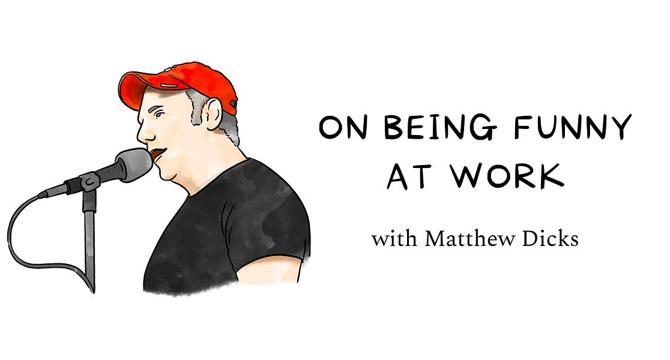
Image Credit: Lenny's Newsletter
On being funny at work
- Being funny can be a learned skill and is not something gifted to a select few, says author and famous Moth StorySLAM champion Matthew Dicks. The seventh technique helps to change the perspective of a question or situation to make other people laugh. By definition, humor is the strategic assembly of specific words, that are spoken in a specific way, to create a surprise that produces a smile or a laugh. Humor is the key to being a memorable leader. It is also perceived as a sign of intelligence, making an individual appear smarter than they might be.
- Being funny is about deploying strategies that make people laugh. Dicks teaches 27 different strategies for humor but explains that new strategies are being invented all the time. Using old technology and design, or experiences that we’ve all had, as opposed to humor is often unoriginal, so try to be unique and original with your delivery.
- Humor is a highly effective means of holding an audience’s attention, convincing people that you can be trusted and ensuring that you are remembered. Being funny is also a powerful way to get people to like you. Forbes identified a sense of humor as the fourth essential quality in a leader.
- By studying comedy and putting time into learning how humor works, business leaders can become more effective in their job. A learned sense of humor can set individuals apart and make them a more memorable leader.
- There are seven strategies that can be used to be funny at work, including nostalgia, exaggeration, and the technique of adding an element that doesn’t belong. Another idea is to use the power of definitions to create a surprising laugh moment, stimulate creativity and encourage a sense of teamwork.
- If being funny is not your strong suit, start with your everyday language and develop humor that feels natural and not forced. Experiment with different styles and approaches and find what works best for your personality and your team’s sensibility.
- Humor breaks down barriers and is a useful tool to lighten conversations or pitch new ideas. In addition to making people like you, humor is beneficial to the audience’s brain. Laughing swapping cortisol in the bloodstream with dopamine, oxytocin, and endorphins— three powerful chemicals that every leader and public speaker should want in their audience’s brains.
- With a deeper knowledge of humor and how it works, business leaders will find it easier to persuade, influence, and connect with people. Using techniques such as exaggeration, including an element that doesn't belong, creating nostalgia, or using the power of definitions can turn a dull presentation into something engaging and memorable.
- Humor is not just about entertaining people. It can also be a powerful way to change minds and persuade people. By mastering humor, business leaders can sharpen their message, stand out from the pack, and influence people in a positive way.
- Finally, being funny should never be forced or contrived. Trying to be something you’re not is always apparent, so it's important to find humor in things that resonate with you naturally. Done right, humor is a powerful tool that can help business leaders communicate, influence, and connect with people in a way that leaves a lasting, positive impression.
Read Full Article
22 Likes
Lenny's Newsletter
306

Image Credit: Lenny's Newsletter
Just evil enough: Subversive marketing strategies for startups | Alistair Croll (author, advisor, entrepreneur)
- In this podcast, Alistair Croll- the co-author of the best-selling book Lean Analytics shares insights from his upcoming book, Just Evil Enough. In it, he and his co-author Emily Ross discuss the importance of subversive marketing strategies in most startups’ growth.
- To succeed, you need to find an 'unfair advantage' in how you capture attention and turn it into profitable demand. This is what Alistair and Emily call “just evil enough.”
- He outlines 11 specific subversive tactics that successful startups have used such as using bugs as features, buyer upgrades, and bait and switch among others.
- Examples of companies like Netflix, Airbnb, and Tesla that used clever tactics early on are also discussed.
- A framework for scanning your market for opportunities is also shared and the importance of finding your “zero-day marketing exploit” is emphasized.
- To apply these tactics, startups need to spend time understanding their industry’s system and status quo, temporarily think like a “supervillain” to brainstorm novel approaches, and look for ways to change their value chain or industry dynamics.
- In conclusion, Alistair explains how to embrace these tactics ethically without actually being evil and the importance of normalizing disagreeable thinking.
- The transcript of the podcast is available at https://www.lennysnewsletter.com/p/just-evil-enough-alistair-croll.
- The podcast is sponsored by WorkOS, Hex, and Vanta and is produced by Penname.
- Lenny Rachitsky may be an investor in some of the companies discussed.
Read Full Article
18 Likes
Minis
57.1k

Image Credit: Minis
CEO explains why he rejects job candidates who say they can start right away
- Gary Shapiro, CEO of the Consumer Technology Association, rejects candidates who say they can start immediately, viewing it as a red flag indicating a lack of loyalty to their current job.
- Shapiro values commitment and believes a candidate should provide sufficient notice, demonstrating respect for their previous employer. This "loyalty test" has been part of his hiring approach for decades, including when selecting his current COO.
- The interview landscape, however, is shifting with the rise of AI, as candidates increasingly use tools to answer tough questions, leading some employers to adopt a more conversational interview style.
Read Full Article
142 Likes
The FishmanAF Newsletter
336
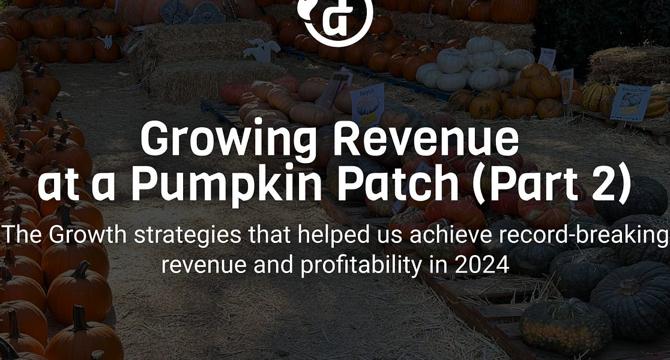
Image Credit: The FishmanAF Newsletter
Growing Revenue at a Pumpkin Patch (Part 2)
- The article talks about tactics used by a group of volunteer dads to generate revenue and improve profitability at a local pumpkin patch.
- The pumpkin patch is run by Wildwood Dads club, which is a non-profit organization dedicated to funding and community building for Wildwood Elementary School.
- In 2023, the group had introduced several growth tactics that resulted in a revenue of $42,000, breaking their previous revenue ceiling of $30,000.
- In 2024, despite logistical snags like city restrictions on sign placements and fewer sales days due to Halloween falling on a Thursday, the group managed a YoY improvement of 30%, generating a revenue of $54,001.
- Nine tactics including marketing, merchandising, SEO, signage, and improving sales tactics were used to achieve this.
- These tactics can be applied across various businesses, including commerce.
- Signage, in particular, turned out to be a massive help in creating visibility and attracting customers, especially from neighboring neighborhoods in Oakland.
- The group capitalized on SEO and had 23 5-star reviews on Google and 10 on Yelp, dominating local search and search volume spikes.
- Other tactics employed included delivery, positioning and messaging, merchandising, improving sales tactics, bulk discounting, and managing inventory.
- The group is optimistic about next year and plans to implement more door busters, better retention strategies, community foot traffic, better parking control, and more signage.
Read Full Article
18 Likes
Minis
30.4k

Image Credit: Minis
Ex-Meta and Google exec reveals the no. 1 'green flag' she looks for in job seekers
- Jennifer Dulski, former executive at Meta and Google and now CEO of Rising Team, shared that her top "green flag" when hiring is adaptability.
- With over 25 years in tech and experience hiring thousands of candidates, Dulski emphasized the importance of resilience and the ability to "bounce back" from setbacks.
- In an ever-evolving workplace with frequent re-organizations, pandemics, and the rise of generative AI, being adaptable has become crucial. Dulski believes that a candidate’s readiness to tackle obstacles head-on and learn from them is essential for today’s fast-paced environment. "Adaptability," she says, "is the key trait I seek."
Read Full Article
69 Likes
The Beautiful Mess
48

Image Credit: The Beautiful Mess
TBM 318: Why Orgs Become Too Tall
- Many companies are discussing “excessive layers of management” due to their “too tall” organizational structure, but they tend to focus on a narrow set of explanations for why this occurred.
- Two primary reasons often lead to a too-tall structure: either the team is too big or the company can’t get “wide” to absorb more people without adding layers.
- There are various reasons why companies add layers or struggle to increase spans of control, including: knowledge, skill, and experience; board and investor optics; new teams and anticipated growth; culture around team vs. individual projects; high work-in-progress; and more.
- Symmetry within and between departments can exert pressure to normalize hierarchical levels, leading to taller structures. Domain breadth and specialization, role ambiguity, buffering between layers and executive span of control are also contributors.
- Trust and delegation culture determine the structure of the organization. Flatter hierarchies are more favorable for companies that emphasize decentralized decision-making, while narrow spans are good for high oversight and control cultures.
- Remote work can enable relative flatness in organizations but requires new habits and behaviors for effective implementation.
- The reasons behind excessive layers and reduced spans of control are complex and require a holistic view for resolution.
- To avoid past mistakes, companies must learn from all these reasons and focus on creating flatter structures that promote efficient and effective management.
- Smaller teams require less oversight, hence companies should provide knowledge-sharing, training, and coaching to support their managers.
- Companies must also address the culture surrounding team vs individual projects and create a high trust culture that encourages delegation and effective support for larger teams.
Read Full Article
2 Likes
Leah’s ProducTea
304
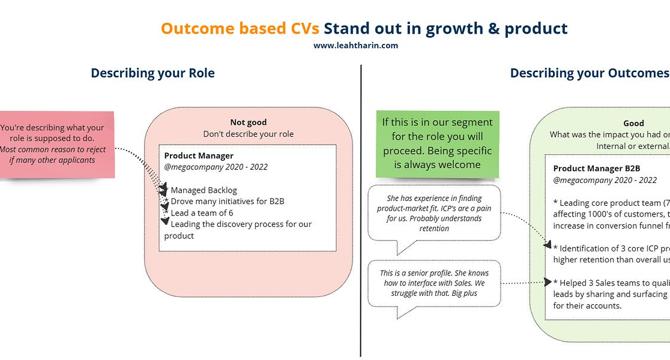
Image Credit: Leah’s ProducTea
Applying for product & growth in 2024
- Getting a job in Product & Growth is much harder than it used to be. In order to stand out, job seekers must keep in mind several factors such as a good CV is different from what it used to be, the attention span of recruiters has shrunk to seconds, the demands of growth product managers are high.
- In order to increase the odds of finding a good job, and not just any job, candidates must show that they are a specialist in something. Being too generic is a bad proposition when applying for a job.
- Size does matter, only not in the way we think. Rarely have I seen someone skipped over for having too short of a CV. The best indicator about a candidate for hiring manager or leadership is how they handle your CV.
- During the interview stage, good vibes and clear communication, in simple terms, could be a strong signal of selection. Personal notes and cover letters can be added only if they are non-generic and specific to the job.
- Outcomes need to be highlighted rather than descriptions in the CV. Candidates should describe their job as stated and the outcome achieved from it.
- It would be bad to lie about experiences or achievements, as senior jobs are more likely to result in back-checking and references.
- In conclusion, the chances of getting hired increases if the vibes and communication during the interview process are good. Candidates should be aware of the guidelines shared in the article, they will increase the odds of landing a good job.
Read Full Article
17 Likes
ADPList’s Newsletter
94
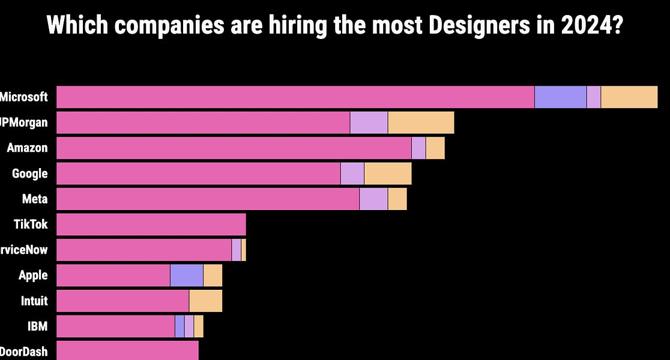
Image Credit: ADPList’s Newsletter
State of the design job market 2024
- Chris Abad, former Director of UX at Google shared guest post that provides in-depth breakdown on the current state of design job market.
- The job market in 2024 will bring unprecedented scrutiny and challenges for designers due to layoffs, shutdowns, and AI replacing human designers.
- According to the data sourced from more than 640,000 design professionals’ job changes since 2019, specific UX roles have significant growth, while others experience a decline.
- Big tech companies like Google, Meta, Apple, Amazon, and Microsoft are hiring designers, often bringing in talent from each other.
- UX Design, Design Strategy, and Conversation Design roles have seen a relative growth of 29.2%, 5.6%, and 8.2%, respectively since 2019.
- However, UX Engineer roles have decreased by -13.7% relative to 2019 levels.
- The competition for UX design roles is intense. Many designers are vying for the same positions, making it harder to get a job in this field.
- Designers from big tech companies are not just moving between tech giants but also exploring opportunities in startups and other industries.
- The data reveals that designers are taking longer to land their next position, and the percentage of designers to find a new job within three months of leaving their previous position dropped from 67.9% in 2019 to 49.5% in 2024.
- Designers can focus on high-growth areas and emerging methodologies in demand, refine their portfolio and upskill themselves to gear up for the current job market's challenges.
Read Full Article
5 Likes
Lenny's Newsletter
199
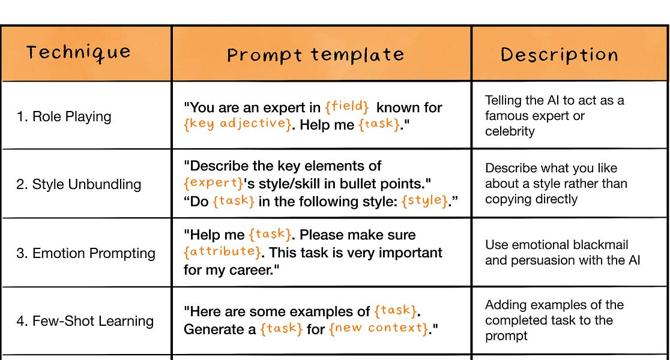
Image Credit: Lenny's Newsletter
Five proven prompt engineering techniques (and a few more-advanced tactics)
- Prompt engineering is the art of crafting instructions for large language models (LLMs) to generate the exact output you want.
- Crafting good prompts is crucial to leveraging AI (as opposed to using it as a novelty tool) and requires a nuanced approach and some experimentation.
- Role-playing prompts instruct LLMs to assume the perspective and style of a particular expert, celebrity, or character.
- Style unbundling involves breaking down the distinguishing elements of a person's style or skill set and prompting the AI to create new content that adheres to those elements.
- Emotion prompting entails adding emotional stakes to your request, which can result in more thoughtful, empathetic responses from the AI.
- Few-shot learning involves providing LLMs with a few examples of a task before asking it to perform a similar task.
- Synthetic bootstrap generates multiple examples based on inputs that can be used to bootstrap the learning process for subsequent prompts.
- Advanced tactics involve breaking tasks into multiple steps or employing an AI monitoring system to correct AI errors.
- Prompt engineering requires giving direction to an LLM so that it generates the exact content required for a task.
- By using role-playing, style unbundling, emotion prompting, few-shot learning, and synthetic bootstrap, AI users can achieve more accurate and relevant results.
Read Full Article
11 Likes
Minis
4k

Image Credit: Minis
CEO Challenges Job Applicants With 3-Second Brain Teaser During Interviews
- A brain teaser shared by CEO Dino Dionne of Genesis Capital Group has sparked widespread online debate.
- Dionne challenges candidates during interviews with a quickfire math puzzle: "3×3-3÷3+3" and expects an answer in 3 seconds, claiming even his six-year-old solved it in 30 seconds.
- Reddit user Back4breakfast posted a screenshot of the puzzle, leading to thousands of likes and comments.
- Some criticized the CEO's approach, saying it felt unfair under interview pressure, while others questioned the value of such a simple math test in a job interview. The post has since amassed thousands of likes and comments.
Read Full Article
44 Likes
The Beautiful Mess
387
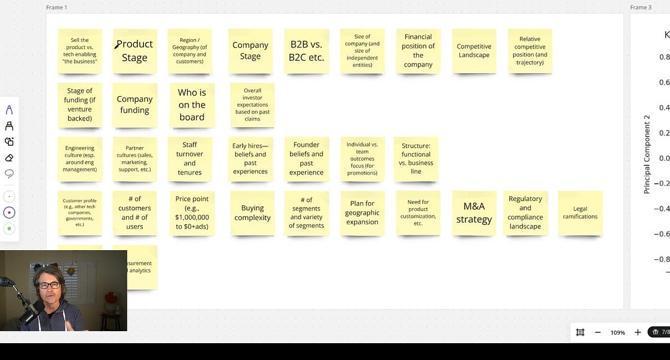
Image Credit: The Beautiful Mess
Keep Product Management Messy
- Product management is a complex function that spans numerous dimensions and is defined differently within different companies.
- The factors that influence product management include company size, the stage of the product, the engineering culture, the competitive landscape, the customer profile, regulatory landscape, and the complexity of the tech stack.
- The different dimensions impacting product management can be combined to create clusters of companies with similar product management culture.
- Product advice is complex and can be either contextual or context-free, directional or actionable.
- The complexity of product management does not mean that it is flawed; instead, it requires a shift in learning approach such as guided mentorship, two-way apprenticeship, and learning through real-world challenges.
- One should focus more on collaborative sense-making rather than individual learning and learn through exploratory role growth instead of structured career paths.
- The key is to approach product management as an emergent field that requires contextual understanding, rather than trying to find a silver bullet that explains it universally.
Read Full Article
22 Likes
Minis
73.3k

Image Credit: Minis
3 Common Résumé and Mock Interview Mistakes
- Alexandria Sauls, who worked at Amazon, Uber, PayPal, and Google, shares three common mistakes applicants make for tech jobs.
- First, failing to answer questions concisely—she recommends using the STAR format (Situation, Task, Action, Result) for clarity. Second, listing responsibilities without highlighting the impact—each bullet point on your résumé should show results. Finally, repeating your résumé when asked for an introduction—Sauls advises blending personality with why you're applying.
- For small talk, she suggests adjusting to the interviewer's vibe. Résumé format matters less than content, with an emphasis on keywords and examples.
Read Full Article
131 Likes
For uninterrupted reading, download the app